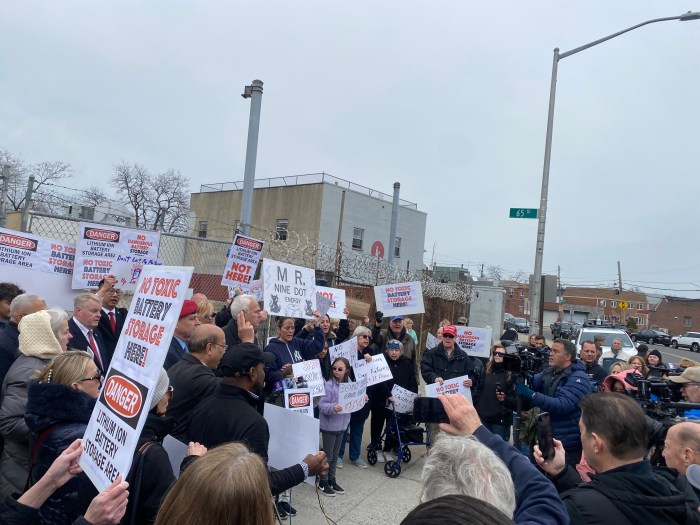
BY CLAYTON PATTERSON | By the end of the 1980s the Lower East Side felt like it had suffered more than its fair share of failed government politics. The homeless crisis was reaching a critical mass. In 1990 there were 70,000 to 80,000 homeless in New York, and 250,000 people were at risk of losing their homes. The drastic cuts in social spending, together with the increasing rate of inflation due to the worldwide financial crisis at the end of the 1980s and the cutbacks in jobs, entailed a rapid pauperization among the middle and lower classes. Additional cuts in state subsidies for affordable housing further exacerbated the housing situation. And there was the conversion of the S.R.O.’s (single-room-occupancy hotels) to co-ops and condos. We all remember Mayor Koch’s famous solution to the problem: “If You Cannot Afford To Live Here, Move.” In 1989 Tompkins Square Park was filled with a “Tent City” made up of hundreds of homeless people. Tent City had many of the same problems associated with Occupy Wall Street in Zuccotti Park. And as at Zuccotti Park, the activists and the homeless tried to govern and control their own space. Back in ’89, one particularly disturbing rumor that caused much consternation and concern among, not only the people sleeping in Tompkins Square Park, but the activist community, was that of a woman’s head having been boiled on top of a stove. The rumor was so constant that a local reporter had contacted the police. It turns out the rumors were true. It was getting to the bottom of this “who done it” murder that became complicated. In the end, Daniel Rakowitz was arrested and charged with the murder. But my question has always been, Did he do it? After his arrest, Rakowitz contacted me and I have spent a number of years, in one way or another, following this case. And there are a number of mysteries connected to this murder. The murdered woman’s name was Monica Beerle. Beerle, from Switzerland, was a dance student at the Martha Graham School of Dance. She was Daniel’s roommate in a tenement building at 700 E. Ninth St. The conflict centered around Monica having the lease and threatening to evict Daniel. Eventually, Daniel, high on acid, was video-interviewed by the police and confessed to hitting her in the throat. However, he always claimed he was tricked and was adamant about the fact that he did not commit the murder. O.K., let’s see. … He did talk violent nonsense, like, “Kill the pigs and feed them to the hogs.” But one reason I thought about his innocence was the fact that whenever there was a violent conflict between the police and the protesters, Daniel always left. Outside of his delusional verbiage, he appeared to be nothing more than a passive, nonviolent, pot-smoking, hippie type with a broken arm. However, there is no question he was involved in dismembering Beerle’s body and then disposing of everything but the bones. Because of the high-profile nature of this crime, I assumed all of the prison telephone conversations I had with him had to have been taped. Daniel went into great, gruesome detail about how he and Eddie and Sylvia, who also crashed in the apartment, cut up the body. Later, I interviewed Sylvia and Eddie and they also went into intimate detail about how they all cut up the body and the problems associated with such a despicable criminal act. Daniel cleaned and kept most of the dead woman’s bones. He was saving them to give them to Monica’s mother in Switzerland. In the meantime, he kept them in a drywall-compound bucket, filled with cat litter, in a locker at the Port Authority. When asked by the police about the body, he told them about the locker. The police went to the locker, found the bucket, and there were indeed human bones inside. According to Dorothy, an investigative assistant to Daniel’s lawyer, on the advice of their own pro-bono lawyer, Eddie and Sylvia, when interviewed by authorities, pleaded the Fifth, and that satisfied the authorities. Eddie and Sylvia were never charged with any crime. Daniel was charged with the murder. One of the unfortunate sidebars of the trial was that the charge of cannibalism stuck as a fact in the case. One of the prosecutor’s habitual criminal witnesses was able to trade a criminal conviction for a get-out-of-jail-free card if he would tell his a tale of finding a human finger in a bowl of homemade “Rakowitz soup” that Daniel had allegedly ladled out in the park. That is a myth: I do not believe that Rakowitz ever served any such soup in the park. In the end, on Feb. 22, 1991, Daniel was found not guilty by reason of insanity — and he has been committed ever since. He is now in Kirby Forensic Psychiatric Center for the criminally insane on Wards Island, in New York City. In the Daniel Rakowitz Wikipedia entry there are a number of questionable facts. For example, the part of his cooking the brain, tasting it and liking it, and thereafter referring to himself as a cannibal. There’s no question he dismembered the body, but out of the hours of conversation I’ve had with Daniel, he’s always denied cooking the soup, feeding it to the homeless or tasting it himself. Also, according to Daniel, he was born in Fort Leonard Wood, Missouri (his father was a criminal investigator for the Army), not Rockport, Texas. At his subsequent sanity trials, like the repeated cannibalism charge, the district attorney went on about “the Rakowitz stare.” There is no Rakowitz stare — just a dull expression. I have visited Daniel many times over the years and he always pushes the same story of someone else having done the murder, but he states he is not allowed to say who did it. Considering that most of the people connected to the case are dead or gone, and certainly nonthreatening, I think he did what he was charged with doing. At the time of his trial he was delusional. And, in my mind, it is possible because of all the psychedelic drugs he was doing that he is convinced someone else committed the murder. He always took responsibility for hitting her in the throat, as well as his part in the body’s mutilation. It was the gap between the death and the mutilation that was unexplained. But another reason I was interested in following the case is the fact that, in my opinion, the prosecutors were just as emotionally hysterical and physiologically out there as Daniel was. I’m not sure what stimulated or caused the D.A.’s imagination to go so far from reality, but the prosecution construed this whole fictional scenario of how Patrick Geoffrois, a local tarot card reader and mystic, was the head of a satanic cult. They went so far as to suggest that the murder was a satanic ritual, led by Patrick, and that I had videotaped the whole gruesome ceremony. Of course, none of their imaginary fiction contained even a grain of truth. But it did create, for me and Patrick, a few complicated situations with a number of attempted setups by the local authorities. There’s not enough space to elaborate on it here, but in one setup, the police ended up with a search warrant to my home, confiscating a tape I had recorded for my “Clayton Presents” program on Manhattan Neighborhood Network public-access TV. If their setup did not have the possibility of ending up with such really serious consequences, the premise of what they were suggesting was so ridiculous I would have laughed at the audacity of their imagination. My blessing was my Legal Aid lawyer, Sarah Jones. She was very smart, related to President Rutherford B. Hayes, and worked at Legal Aid because of her idealism. She could have made much more money in the corporate world. She did laugh at some of what they were projecting. It took me more than a year of going to court to get the tape back into my archives. This prosecutorial satanic madness led to some very strange and unique interactions between myself and the “authorities.” This part of the history will have to be dealt with on another day. But there is no question I got an insider’s view of two different sides of social madness. This part of my L.E.S. legal journey taught me lessons about how dangerous out-of-control individuals with political and legal power can be — in this case, the police and prosecutors. And also how dangerous speculative gossip can be. Thankfully, I survived the madness with just a few scrapes and bruises. It could have been much worse.
Read more: Ten contenders vie for lucrative New York casino licenses


































